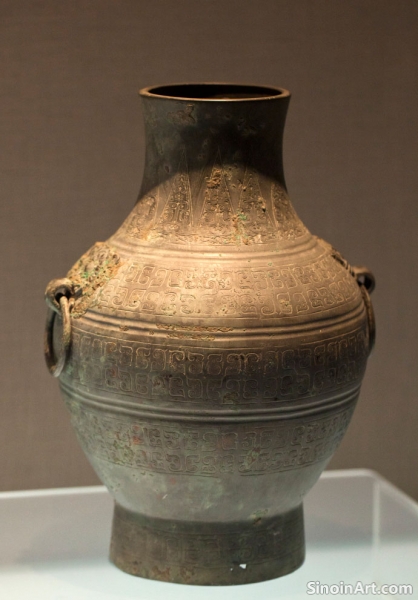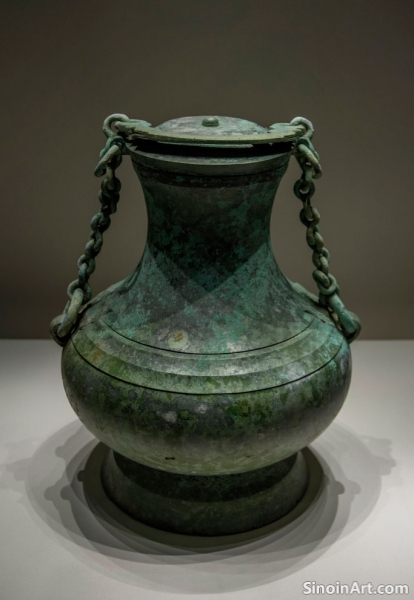Beyond Bronze: Other Materials Used in Conjunction with Bronze Ware
|
While bronze was the primary material used in the creation of many iconic objects in ancient China, it was often combined with other materials, such as jade, bone, shell, and wood, to create pieces that were even more complex and multifaceted in both function and design. The combination of materials helped to create some of the most beautiful and intricate pieces of ancient Chinese art.  Jade, a highly valued stone in ancient China, was often incorporated into bronze objects, either as inlaid decorations or as components of the bronze objects themselves. The inclusion of jade helped to add a sense of beauty and spiritual power to the bronze pieces. Jade was often used in bronze work to enhance the visual and symbolic aspects of the art form.  Bone and shell were often used for decorative purposes, particularly inlays and embellishments, adding texture and visual contrast to bronze objects. The inclusion of bone and shell helped to add unique visual qualities to the bronzes. The combination of different materials helped to create truly unique pieces.  Wood was used in the creation of handles, bases, and other structural components, providing functional support for the bronze and adding to the overall size and impact of the object. The use of wood allowed for more complex and larger designs. The combination of bronze and wood allowed for the creation of more durable and sophisticated pieces. The combination of these materials with bronze highlights the ingenuity and craftsmanship of the ancient Chinese artisans, who were masters of both metallurgy and material design. The combination of different materials added new levels of both beauty and complexity to the pieces. |
Tag : bronze ware materials, jade inlays, Chinese art, ancient craftsmanship, mixed media art
Related information
- The Production and Use of Bronze in Ancient Chinese Musical Instruments: Harmony and the Cosmos
- The Influence of Ancient Chinese Bronze Ware on Later Japanese Art and Design
- Bronze Ware and the Development of Ancient Chinese Writing Systems
- Bronze Ware and Ancient Chinese Astronomy: Celestial Symbols and Interpretations
- Bronze Ware and the Development of Ancient Chinese Writing Systems: From Script to Art
This article explores the use of bronze in ancient Chinese musical instruments, highlighting the technical skill involved in their creation, the cosmological beliefs they represent, their role in ritual practices, and the interplay between music, spirituality, and the material world.
This article explores the influence of ancient Chinese bronze ware on later Japanese art and design, highlighting the adoption of Chinese forms and techniques, the development of unique Japanese styles, and the impact of cultural exchange on creative expression.
This article explores the relationship between bronze ware and the development of ancient Chinese writing systems, highlighting the earliest forms of writing on bronze, the evolution of script styles, and the importance of these inscriptions in understanding early Chinese language.
This article explores the connection between bronze ware and ancient Chinese astronomy, highlighting the use of celestial symbols, the representation of astronomical phenomena, and the use of bronze in astronomical instruments, showcasing the interplay between art and science.
This article explores the relationship between bronze ware and the development of ancient Chinese writing, highlighting how the medium of bronze influenced the forms and styles of writing, and how it helped to establish the importance of writing in ancient Chinese culture.